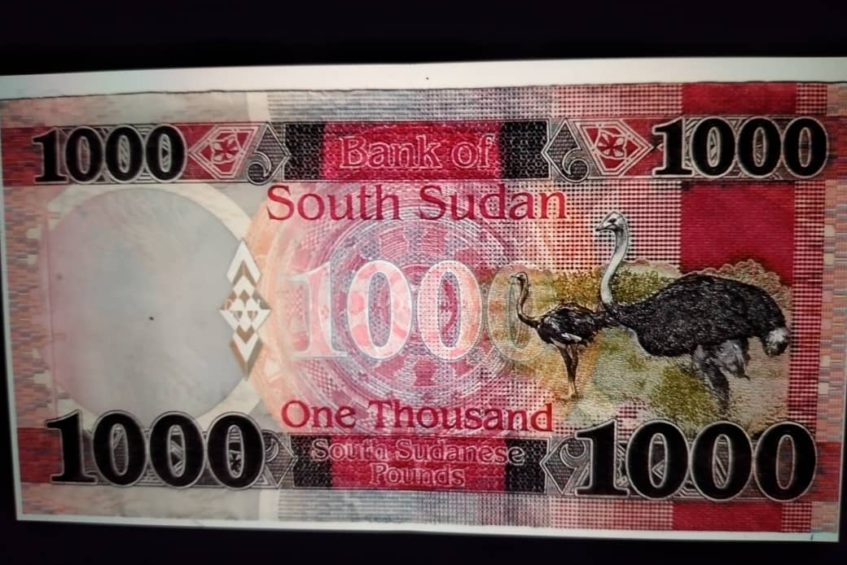
The Bank of South Sudan on Tuesday launched and introduced 1,000 pound banknote.
It explains that it carries out a review of the denomination mix from time to time to ensure that the available denomination mixes are aligned with macroeconomic conditions and demand.
The central bank argues that the introduction of the new higher denomination is meant to complement the existing banknotes, to ensure customer convenience, and bring about efficiency in the printing of currency to generate savings for the country.
It states that the introduction of SSP 1000 banknote will ease its portability, adding that the higher denomination will reduce high transaction costs, more efficiency in high-value transactions in cash, and reduce printing and currency management costs among others.
Dier Tong Ngor, bank governor, argues that the introduction of SSP 1000 banknote will not cause inflation – saying it will actually make it more convenient when engaging in high transaction volumes.
Dier said the new notes will complement the small ones such as SSP 5, 10, and 20.
“In July 2019, the Bank of South Sudan planned to introduce the SSP 1,000, after successful introduction of the SSP 500 banknote in 2018 which showed to us a significant increase in the demand for higher denomination of banknote,” he told the media.
“It is with this few remarks that I now declare the new denomination of SSP 1000 banknote to be formally launched.”
Tong went on to explain and justify why the Central Bank introduced the high-value notes today.
“Printing small notes costs us a lot of small currency every year. This one will reduce it significantly. The other justification of course is the storage, [which] has been a challenge to us because we have this small denominations and we need massive space in order to store them,” the governor added.
The principal features of the new 1000 bank note include feature for the partially sighted, watermark, color changing holographic security strip, disappearing value, gold colored iridescent bank, Nile of values numerals and a water mark portrait of Dr. John Garang de Mabior with a dominant color of maroon.
On the other side, the wordings include the “Bank of South Sudan” printed on the upper part and the face value of the note in bold is written horizontally in each corner.
Other wordings on the obverse include two signatures and a security strip near the middle of the note with the year 2020 written on the right lower corner.
The new 1000 bank note is expected to be in circulation soon.
The South Sudanese Pound was introduced on 18 July 2011, replacing the Sudanese Pound.
It is subdivided into 100 piasters; the National Legislative Assembly approved it before the independence in July 2011.
There are seven different denominations (1, 5, 10, 20, 50, 100 and 500 pounds).
In 2016, the Bank of South Sudan issued a 20 South Sudanese pound banknote to replace the 25 South Sudanese pound banknote.
It later introduced into the market coins in form of 10 piaster, 20 piasters & 50 piasters, 1 pound, 2 pounds.
However, the coins are rarely used for transactions nation-wide.
With the crunch in the economy, the 1 pound value can no longer purchase any commodity in the market.
Support Eye Radio, the first independent radio broadcaster of news, information & entertainment in South Sudan.
Make a monthly or a one off contribution.
Copyright 2024. All rights reserved. Eye Radio is a product of Eye Media Limited.